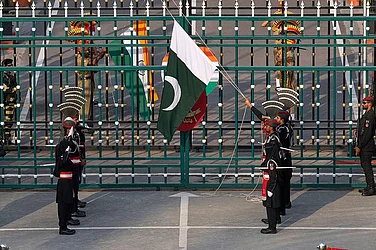A mix of pragmatism, business sense along with a large dose of optimism marks Railway Minister Suresh Prabhu's first Railway Budget. While presenting a five-year vision of restructuring and growth, Prabhu basically takes off from the track pursued by many of his predecessors. The tricky question remains – where will the funds come from?
Prabhu may not have fallen into the trap of naming new trains to be introduced, but he has held out the promise of doing so over the next few weeks of the current Parliament session. The mid-term vision includes speeding up some select trains to run between 160-200 km/hour over the next two years even as plans to introduce bullet train are still to move to the drawing board.
A chartered accountant-turned-politician, Prabhu had sought the views of general public and experts in the run up to the budget and has clearly taken on board many among the over 2,000 inputs he received online. Thus you have a clear focus on passenger amenities – from better housekeeping of trains to better facilities for differently-abled and the blind.
Instead of new trains, he has opted to add more coaches to trains on heavy routes. To decongest some of the major destinations, particularly state capitals, be prepared to board and deboard at satellite stations. (Wonder if the planners have ever tried to travel from some of the satellite stations that are operational as they are generally devoid of all amenities including proper lighting and transport facilities to the city, particularly late at night.)
After the steep hike in passenger fare and freight rates last year, Prabhu has refrained from further fare hike in his vision statement, which while being passenger and trade friendly, depends mostly on outside resources – through joint ventures, proposed revamped public-private-partnership, and loans for resource mobilisation.
The five-year vision statement on ways being explored to fix a multitude of slippages in the system that caters to around 30 million passengers (around 50 per cent is suburban traffic) and freight every day, clearly shows Prabhu has done a thorough study of the cash-starved rail network that he took charge of just four months back.
Alas for the vision to be accomplished the minister would need help from all quarters – be it the 13 lakh railway staff, the members of parliament, the states, the private sector, the multilateral funding bodies, besides improving efficiency to woo passenger and freight traffic off road and air to generate internal resources.
As he clearly states, "The proposals contained in this Budget should, therefore, be seen as the beginning of a Five Year Action Plan to transform the Railways….(for which) we envisage an investment of Rs 8.5 lakh crore.”" The size of the Plan Budget for 2015-16 fiscal has been raised by 52 per cent to Rs 1,00,011 crore ( as against Rs. 65,798 crore in 2014-15) with the Central government contributing 41.6 per cent of the total Plan Budget and internal generation taking care of 17.8 per cent. For the rest, the plan is to generate funds from other sources including market borrowing, for which a special cell is to be set up.
"In view of the fact that it would be a challenging task to initiate the mobilisation of extra-budgetary resources, it is proposed to set up a Financing Cell in the Railway Board, which would seek the benefit of advice from experts in this field," stated the minister. For financing remunerative projects through market borrowings, Prabhu informed parliament that the plan is to tap low cost long term funds from insurance and pension funds, multi-lateral and bilateral agencies which can be serviced through incremental revenues. For this purpose, the Railways plans to create new vehicles to crowd in investment from long-term institutional investors and other partners.
Besides resource generation, what would be interesting to watch out for is how Prabhu brings his multiple skills into play, whether ensuring efficient use of funds deployed, faster completion of scores of pending projects, greater focus on energy efficiency and environment-friendly practices including plans to set up waste to energy plants.
















